Introduction to Pea Cultivation
The pea (Pisum sativum), also known as pea or green pea, is a legume widely cultivated for both its nutritional value and its versatility in the kitchen. This crop adapts to a wide range of climates and soils, making it a popular choice for farmers in various regions. This article provides a complete guide on pea cultivation, from soil preparation to harvest and post-harvest management, with the goal of maximizing yield and product quality.
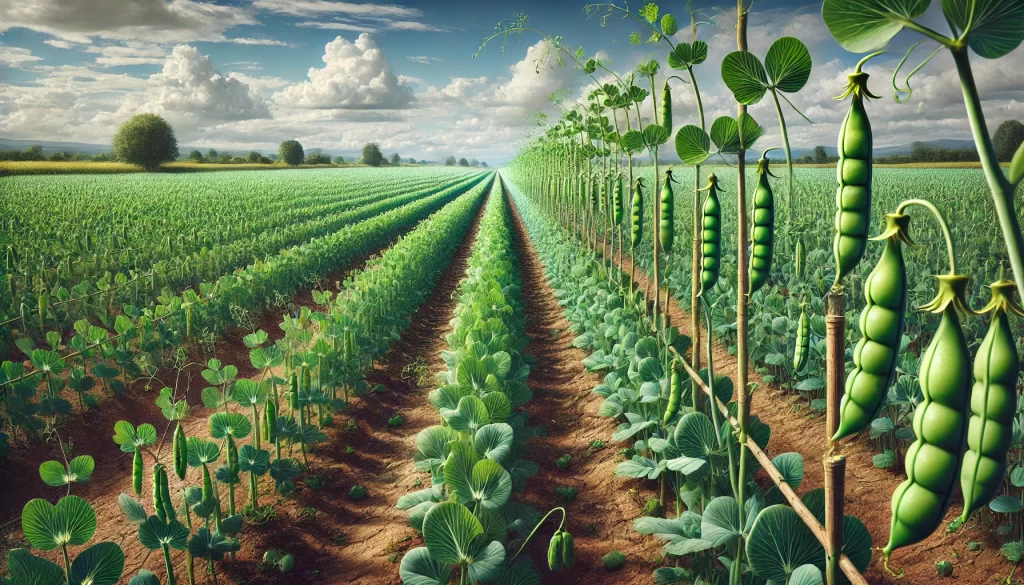
Land Selection and Soil Preparation
Ideal Climatic Conditions
The pea is a plant that thrives in temperate climates, preferring temperatures between 10°C and 24°C. It is a cool-season crop that does not tolerate high temperatures well, so it is typically sown in spring or autumn. The pea requires a cool period during flowering and pod development to produce high-quality grains.
Soil Selection
The pea prefers well-drained, fertile soils with good organic matter content. Loamy-sandy or loamy soils with a pH between 6.0 and 7.5 are ideal for its cultivation. It is important to avoid soils with waterlogging problems, as they can cause root diseases.
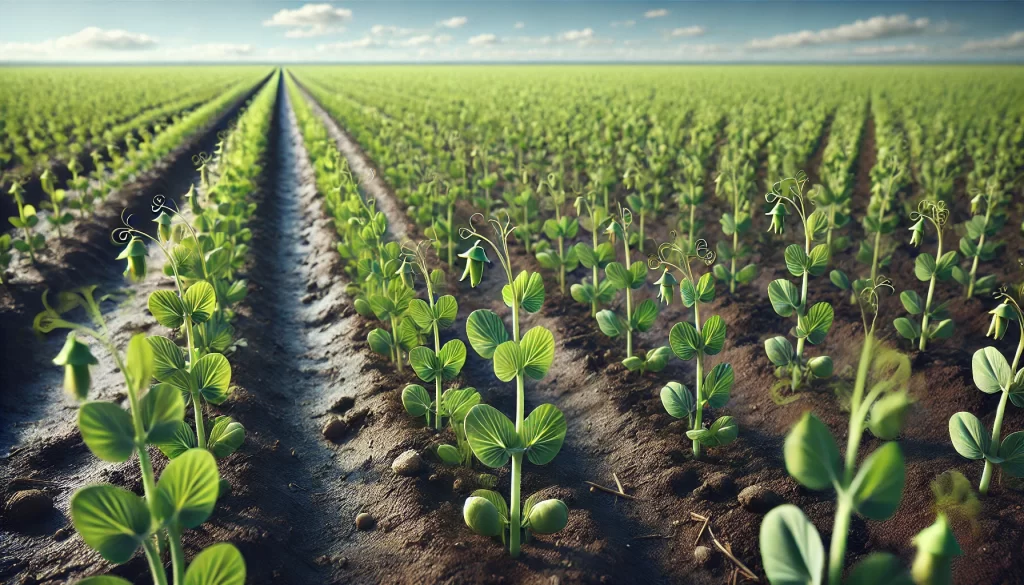
Soil Preparation
- Deep Tillage: Perform deep tillage to improve soil structure and facilitate root development.
- Incorporation of Organic Matter: Add compost or well-decomposed manure to improve soil fertility and water retention capacity.
- Adequate Drainage: Ensure good drainage to avoid waterlogging that could negatively affect crop development.
Pea Sowing and Planting
Sowing Methods
Peas are sown directly in the field, which allows for rapid establishment and plant development. Sowing is done in rows or furrows, depending on management practices and field conditions.
Seed Preparation
- Seed Selection: Use certified, disease-free seeds to ensure uniform germination and good yield.
- Seed Treatment: Seeds can be treated with fungicides and rhizobium inoculants to improve germination and nitrogen fixation.

Direct Sowing
- Sowing Depth: Seeds should be sown at a depth of 2 to 4 cm, depending on soil texture and climatic conditions.
- Spacing: A spacing of 5 to 10 cm between plants and 50 to 60 cm between rows is recommended, depending on the variety and management practices.
Sowing Time
Peas are typically sown in spring as soon as the soil is workable and the risk of frost has passed. In warmer climates, they can also be sown in late summer for a fall harvest.
Pea Irrigation and Water Management
Water Requirements for Peas
Irrigation is essential for pea development, especially during germination, flowering, and pod filling. Water requirements vary according to the growth stage:
- Germination and Establishment: Moderate irrigation to ensure uniform germination and establishment of vigorous seedlings.
- Vegetative Growth: Maintain consistent irrigation to promote healthy and vigorous growth.
- Flowering and Pod Filling: Provide adequate irrigation during these critical stages to ensure full and high-quality pods.
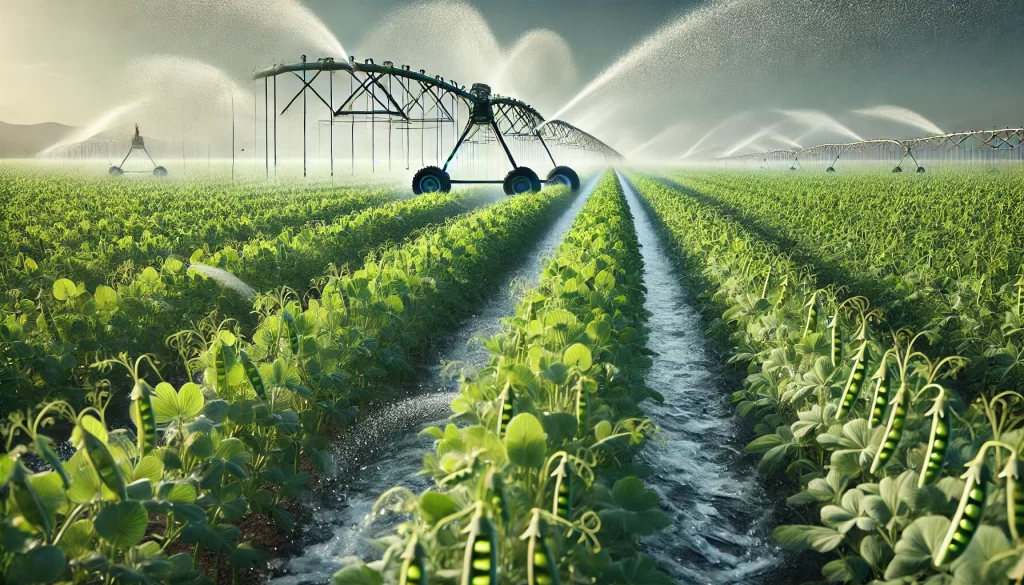
Irrigation Systems
- Drip Irrigation: This is the most efficient system for pea cultivation, as it provides water directly to the root zone, minimizing evaporation losses.
- Sprinkler Irrigation: Suitable for large areas, but care should be taken to avoid over-wetting the leaves, which could favor the appearance of diseases.
Pea Fertilization
Nutritional Requirements
Peas, like other legumes, have the ability to fix atmospheric nitrogen through a symbiosis with rhizobium bacteria, reducing their need for nitrogen fertilizers. However, a balanced fertilization plan is important to ensure optimal yield.
- Phosphorus (P): Crucial for root development and pod formation.
- Potassium (K): Improves disease resistance and pod quality.
- Micronutrients: Zinc, molybdenum, and iron are important for overall plant health and nitrogen fixation.
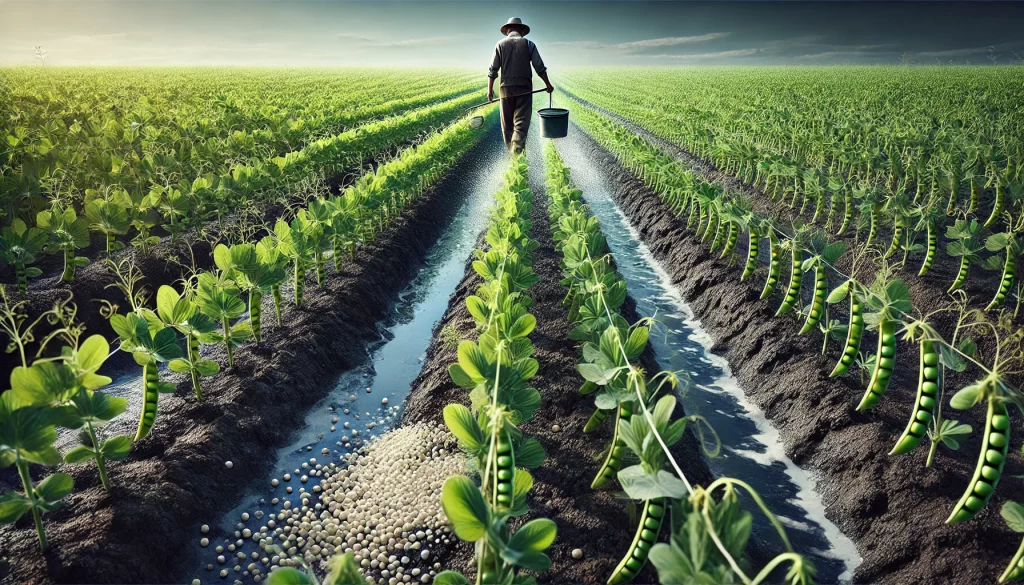
Fertilization Plan
- Base Fertilization: Apply phosphorus and potassium before sowing to prepare the soil.
- Top Dressing: Apply additional phosphorus and potassium during the crop cycle, adjusting doses according to soil analysis and plant development.
- Seed Inoculation: Inoculate seeds with rhizobium bacteria before sowing to improve nitrogen fixation.
Pest and Disease Management
Common Pests
Pest management is essential to maintain the health of pea plants and ensure the production of high-quality pods. The most common pests include:
- Aphids: Affect young shoots and can transmit viral diseases.
- Thrips: Small insects that feed on sap, causing deformities in leaves and pods.
Control Strategies
- Regular Monitoring: Inspect plants regularly to detect pests in a timely manner.
- Biological Control: Introduction of natural predators such as ladybugs and parasitic wasps.
- Insecticide Application: Use specific products following technical recommendations to minimize environmental impact and prevent resistance.

Common Diseases
Diseases can significantly affect the productivity of pea crops. The most common include:
- Powdery Mildew (Erysiphe polygoni): A fungus that affects the leaves, forming a white layer that reduces photosynthesis and plant vigor.
- Antracnosis (Colletotrichum spp.): A disease that causes dark spots on pods and leaves, reducing quality and yield.
Control Strategies
- Sanitary Management: Remove parts affected by diseases to reduce spread.
- Fungicide Use: Apply preventive and curative fungicides under conditions favorable for disease development.
- Crop Rotation: Avoid planting peas in the same area for several consecutive years to reduce disease pressure.
Pea Harvest and Post-Harvest Management
Maturity Indicators
Peas are harvested when the pods have reached their physiological maturity, which can be determined by:
- Pod Color: The pods change from green to a lighter or yellowish tone, depending on the variety.
- Pod Sound: When shaking mature pods, the grains should rattle, indicating they are ready to be harvested.
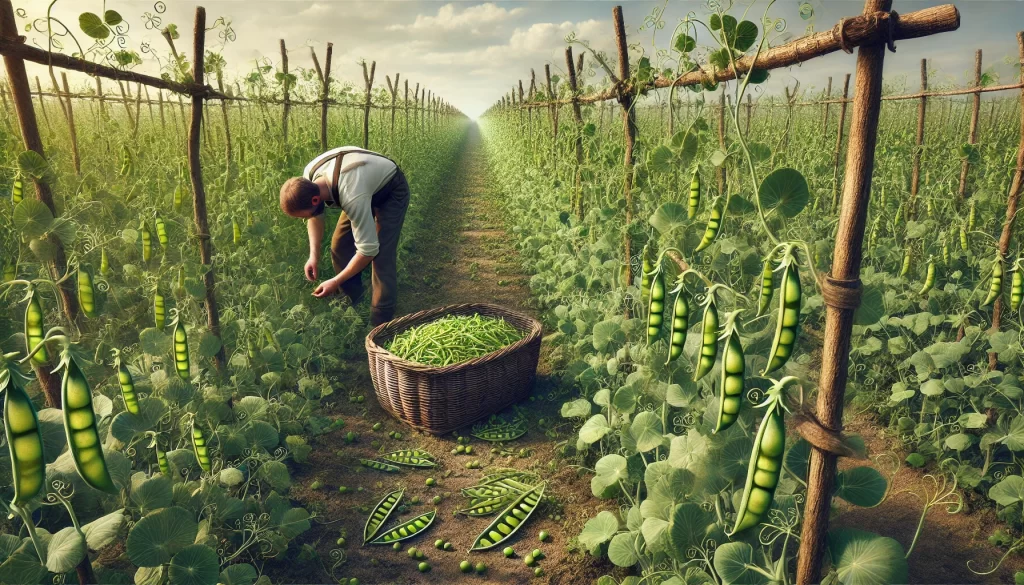
Harvest Techniques
Harvesting can be done manually or mechanically, depending on the size of the cultivated area. It is important to avoid harvesting in high humidity conditions to prevent pod and grain deterioration.
Post-Harvest Management
Post-harvest management is crucial to maintaining the quality of pea grains. Recommended practices include:
- Drying: Dry the grains until they reach a safe moisture content, generally around 13-15%, to avoid the appearance of fungi and quality loss.
- Cleaning and Grading: Clean and grade the grains to remove impurities and ensure uniform quality.
- Storage: Store grains in dry, ventilated conditions to preserve their quality and prevent pest attacks.
 AgronoBlog – Agriculture Blog
AgronoBlog – Agriculture Blog